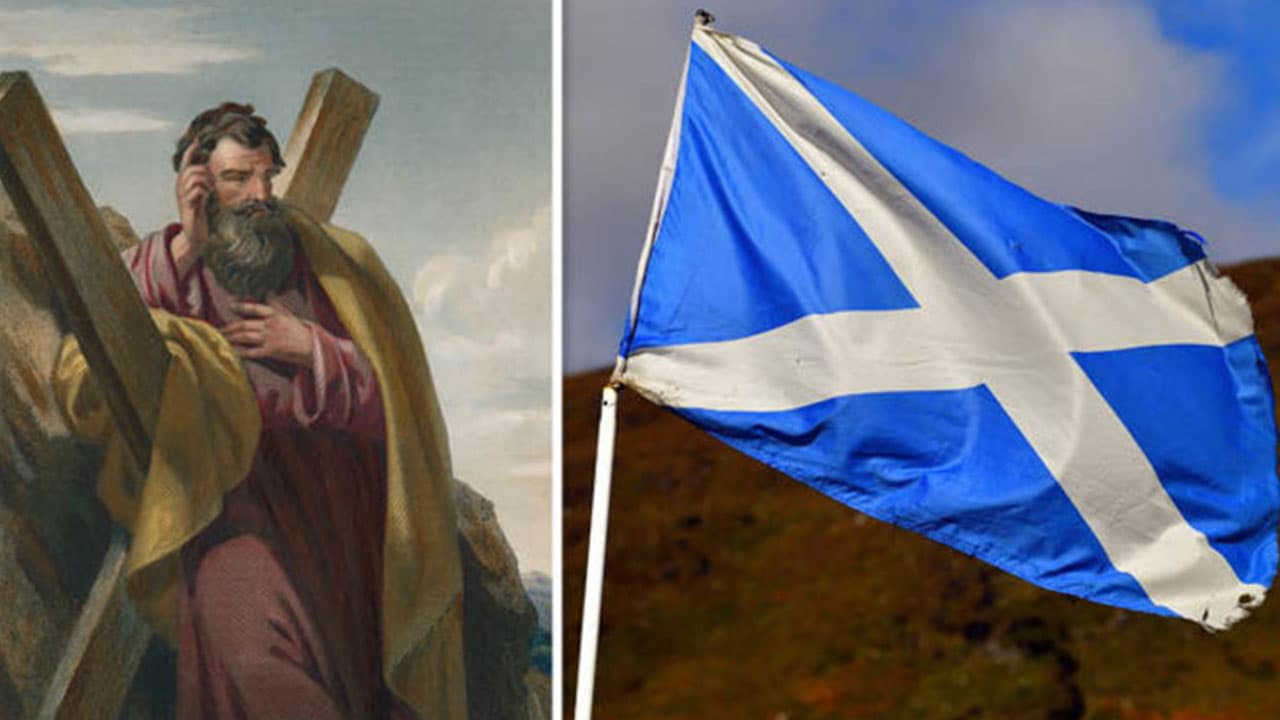Is St. Andrew’s Day a Public Holiday in the UK?
St. Andrew’s Day is a public holiday in Scotland but an optional holiday in the UK. Most of the public institutions remain closed on this day. But, if this particular day falls on a Sunday, then the holiday is observed on the immediate Monday which arrives. Apart from Scotland, it is not a bank holiday in England, Northern Ireland and Wales.
Who was Saint Andrew?
As per the teachings put forth by Christianity, Saint Andrew happened to be one of the twelve pupils of Lord Jesus. His brother Simon Peter , is now revered as
the first official pope of the Roman Catholic church. Both of them undertook the profession of fisherman in Galilee, which is now a part of modern day place.
This is where they met Jesus for the first time and ultimately both of them became his followers or disciples.
Just like the case was with Jesus Christ,
St. Andrew was also persecuted for his beliefs. But, he declared himself unworthy of being crucified like Jesus, considering the fact that he was his disciple.
Hence, an X shaped cross instead of a T shaped cross was used to nail him down on 30 November in Greece. His crucifixion took place in 60AD. Ever since then,
Saltire’s X shaped cross came to be known as the symbol associated with Saint Andrew Patron Saint.
Why is St Andrew the Patron Saint of Scotland?
During a certain period after his death, some of his antiquities arrived in Scotland which included his finger bone, arm and kneecap. A popular religious fable
states that once an angel instructed Saint Rule to carry some of St. Andrew’s relics and visit the West direction by sea. If a shipwreck occurs in any place, then
he was to establish St. Andrew’s Cathedral in it. By the grace of the almighty, no such thing occurred and instead he landed up in a small village named, Kilrymont.
This is the place where he constructed the Cathedral and it ultimately became a grand pilgrimage site for Christians. However, the relics were in ruins when the Scottish
reformation movement came into existence. But, the Archbishop of Amalfi compensated for this loss and gifted one of Saint Andrew’s shoulder blades. Hence, this is how a piece
of Saint Andrew found a forever place in Scotland. Even though St. Andrew did not ever visit Scotland physically, the folks of Scotland have been celebrating his death anniversary
with great respect and vigour.
How is St Andrew’s Day Celebrated in Scotland?
For over a period of 1000 years now, Scottish people have been feasting and hosting grandiose celebrations in honour of their patron saint. It was in the year 1302, that St. Andrew
was declared the official patron of Scotland. The Saltire or the official flag of Scotland is hosted on the official buildings, where people take part in the celebrations heartily.
Before wrapping up, let us have a quick look at the major highlights of St Andrew’s Day in Scotland.
1. In Edinburgh, the celebrations of this day last a week long, where traditional ceilidh dancing remains the primary attraction.
2. Ceilidh dancing remains a traditional form of dancing where couples or sets (group of eight people) take part in dancing while forming circles.
3. In Glasgow City Centre, a popular Ceilidh is organized which goes very well with the traditional music played there.
4. A folklore is also prevalent about this day under which young and unmarried spinsters pray in order to be shown some signs about their would-be husbands. This happens during the midnight when the 29 November slowly turns into 30 November.
5. As per the ritual, young women would peel an apple and throw it on the ground. It is believed that the peel would carve the name of their future husbands on the ground.
6. The Annual Saltire festival is organized in East Lothian and its primary focus is on the enriched heritage of Scotland, which also includes its arts and sports. Consequently,
a 10k marathon, golfing tournament and many such fun activities are organized on the day of St Andrew’s Feast.
St Andrew’s Day Observances
| বছর | সপ্তাহের দিন | দিনাঙ্ক | নাম | ছুটির প্রকার |
|---|---|---|---|---|
| 2019 | Sat | 30 নভেম্বর | St Andrew’s Day | স্থানীয় ব্যাংক ছুটি |
| 2020 | Mon | 30 নভেম্বর | St Andrew’s Day | স্থানীয় ব্যাংক ছুটি |
| 2021 | Tue | 30 নভেম্বর | St Andrew’s Day | স্থানীয় ব্যাংক ছুটি |
| 2022 | Wed | 30 নভেম্বর | St Andrew’s Day | স্থানীয় ব্যাংক ছুটি |
| 2023 | Thu | 30 নভেম্বর | St Andrew’s Day | স্থানীয় ব্যাংক ছুটি |
| 2024 | Sat | 30 নভেম্বর | St Andrew’s Day | স্থানীয় ব্যাংক ছুটি |
| 2025 | Sun | 30 নভেম্বর | St Andrew’s Day | স্থানীয় ব্যাংক ছুটি |
FAQs
1. What does St Andrew’s Day mean?
St. Andrew’s Day is celebrated in honour of the country’s patron saint, Saint Andrew. The Scottish folks celebrate this day with great vigour and charm.
2. How do we celebrate St Andrew’s Day?
The celebrations of this day last a week long, where traditional ceilidh dancing remains the primary attraction.
3. What do you eat on St Andrew’s Day?
St Andrew’s Day Recipes - Baked haggis, Neeps & tatties, Creamy savoy cabbage with carrots, Skirlie mash, Highland beef with pickled walnuts & puff pastry.
4. What do you wear on St Andrew’s Day?
Wearing tartan patterns is a great way to show your Scottish pride.
So, this was all you need to know about St Andrew’s Day 2024 in Scotland. We hope that you will appreciate this write up. Thankyou for connecting with us!!

